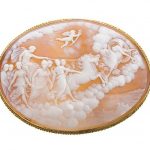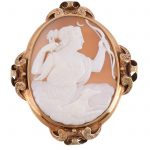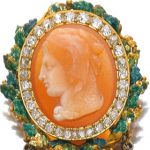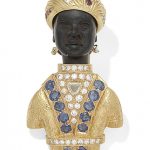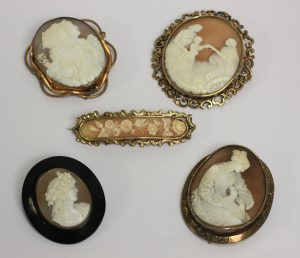
Comprising an oval shell cameo brooch, carved to depict Zeus, the Greek King of Olympus, and Hera, the Queen of Olympus, to scalloped wirework frame, an oval shell cameo brooch, carved to depict St Agnes, seated with lamb at her lap, to scroll engraved mount, two further oval shell cameo brooches, and a floral spray cameo brooch, of elongated oval outline, with scroll decorated frame, first brooch length 6.2cm.
What is a Cameo
A cameo is a carved miniature which is often used in jewellery making.
Cameo Brooches
Brooches are one of the commonest ways in which a cameo is used. The cameo can be carved in many different materials such as gemstones, lava or shell. In modern costume jewellery, resin is often used and sometimes this can be mistaken for shell cameos.
Cameo carvings can be either in relief or intaglio.
Relief Cameos
Relief cameos are the most commonly found cameos in brooches. In these cameos the carving is raised and is often in a contrasting colour or material.
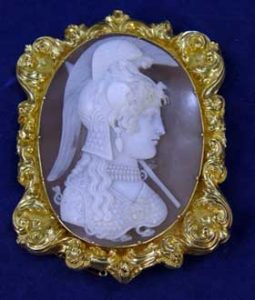
Intaglio Cameos
Intaglios are not technically a cameo but are known as an Intaglio in their own right. Intaglios are more commonly found in seals and rings than in brooches. In rings they often had a duel purpose as both a ring and a seal.
Intaglios are often carved in gemstones such as amethysts or carnelian.
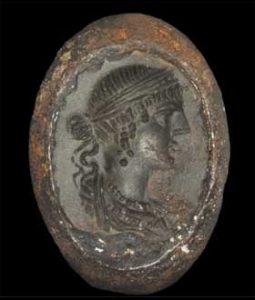
Mythological Figures in Cameos
Many cameo brooches often depict classical figures such as Minvera, the God of War or Diana the huntress. Diana can often be recognised by the moon crescent in her hair. Other mythical creatures such as angels are often found carved in cameos.
